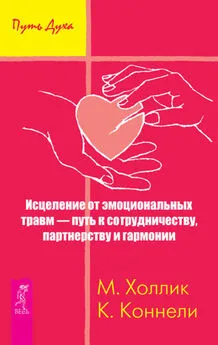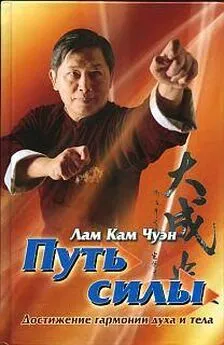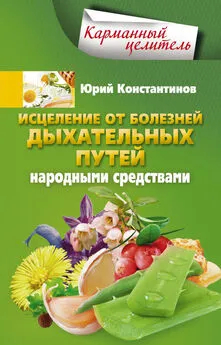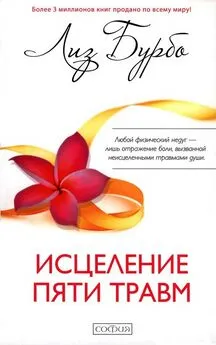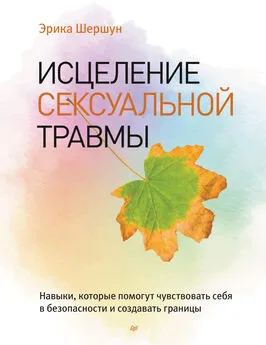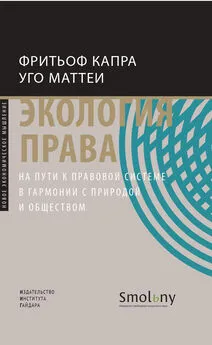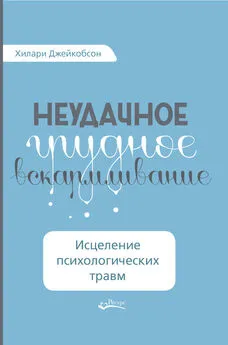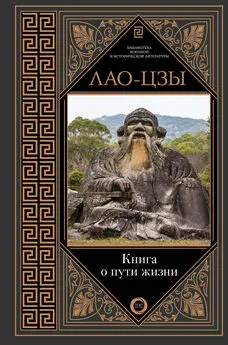Кристин Коннелли - Исцеление от эмоциональных травм – путь к сотрудничеству, партнерству и гармонии
- Название:Исцеление от эмоциональных травм – путь к сотрудничеству, партнерству и гармонии
- Автор:
- Жанр:
- Издательство:Array Литагент «Весь»
- Год:2012
- Город:Санкт-Петербург
- ISBN:978-5-9573-2380-8
- Рейтинг:
- Избранное:Добавить в избранное
-
Отзывы:
-
Ваша оценка:
Кристин Коннелли - Исцеление от эмоциональных травм – путь к сотрудничеству, партнерству и гармонии краткое содержание
Для того чтобы ответить на эти вопросы, М. Холлик и К. Коннелли провели серьезную исследовательскую работу, благодаря которой пришли к выводу, что все войны и катастрофы имеют первопричину, скрытую в человеческой природе, – психологические травмы, имеющиеся у каждого человека.
Авторы уверены: жить в мире и гармонии может любой, если исцелится от внутренней боли, – и рассказывают, как это сделать. Они рассматривают различные способы, начиная от древних индейских ритуалов и заканчивая современными психологическими техниками, и предлагают читателю авторскую методику, которая поспособствует не только личному исцелению, но и повороту хода в истории!
Исцеление от эмоциональных травм – путь к сотрудничеству, партнерству и гармонии - читать онлайн бесплатно ознакомительный отрывок
Интервал:
Закладка:
Обучается через движение. Использует язык и память тела.
Основная деятельность: управление телом и манипуляция объектами внешнего мира.
Способность использовать тело или части тела – руку, пальцы, кисти – для решения проблемы, сделать или произвести что-то. Наиболее наглядными примерами являются люди, занимающиеся легкой атлетикой или театральным искусством.
Обучается через взаимодействие с природой. Распознает и понимает растения и животных.
Основная деятельность: распознавание и классификация объектов окружающего мира.
Способность человека ориентироваться в среде живых существ… так же, как и обладать чувствительностью к другим проявлениям мира природы… Эта способность была большой ценностью… среди охотников, собирателей и фермеров. Она продолжает играть центральную роль в таких профессиях, как ботаник или шеф-повар.
Обучается через рассмотрение фундаментальных вопросов. Ощущает себя во времени и пространстве (космосе). Чувствительность к фундаментальным вопросам человеческого бытия и способность задумываться над ними. Способность позиционировать себя относительно бесконечности как ее элементарная часть. Способность заниматься наиболее важными вопросами человеческого бытия: смысла жизни и смерти, цели существования вселенной. Способность испытывать любовь и полную погруженность в созерцание шедевров искусства.
Задумывается над целью и смыслом жизни, творчества, над вопросами неравенства, нравственности, добра и зла; мечтает о светлом будущем и конструирует его.
Интуитивное понимание физического мира. С ранних лет дети учатся осознавать разницу между живыми существами, неживыми объектами и мыслительными конструкциями. Они обладают врожденным пониманием твердости, силы тяжести и инерции. Они знают, что собака без лапы остается собакой, а ящик может служить вместилищем, стулом или столом.
Гибок, применяется к овладению любым навыком или понятием, в том числе причинно-следственной связи. Необходим для понимания вещей, явлений и процессов, которые лежат вне сфер ответственности других модулей интеллекта, либо располагаются на границах этих сфер.
Список литературы
Abram D. , The Spell of the Sensuous. NY: Vintage Books, 1996.
Alberts B., Johnson A., Lewis J., Ruff M., Roberts K. and Walter P., Molecular Biology of the Cell: Garland Science, 2002.
Aldana J., The 15-Minute Miracle // http://www.15minutemiracle.com/home.html, 2009.
Aldhous P., The fog of war // New Scientist 202 (2707): 40–43, 2009.
Amnesty International. Stop violence against women: statistics //
http://www.amnesty.org.uk/content.asp?CategoryID=10309, 2009.
Anon., Stress ‘harms brain in the womb’ // BBC News, 26 January 2007.
Anon., Here’s to the baby // New Scientist 200 (2681): 6, 2008a.
Anon., Obesity: in statistics // BBC News, 2 January 2008b.
Anon., The abuse goes on // New Scientist 199 (2674): 4, 2008c.
Anon., Understanding embryo implantation offers insight into infertility // Medical Research Council News, 29 September 2008d.
Anon., ‘Christine’ – A brave woman’s fight for the future // Amnesty Magazine (153): 21–22, 2009.
Anon., Deteriorating home life puts kids at risk // New Scientist 201 (2701): 14, 2009a.
Anon., ‘Many girls’ abused by boyfriends // BBC News, 31 August 2009. 2009b.
Anon., Umbilical cord // Wikipedia [Available from http://en.wikipedia.org/wiki/ Umbilical_cord, 2009c.
Anon., Scary Associations Wiped for Good? // New Scientist 201 (2695): 14, 2009d.
Anon., Try Tetris to help treat trauma // New Scientist 201 (2691): 12, 2009e.
Anthony D. W., The Horse, the Wheel and Language: How Bronze-Age Riders from the Eurasian Steppes Shaped the Modern World. Princeton: Princeton University Press, 2007.
Anthony D. W. and Brown D. R ., The Earliest Horseback-Riding and its Relation to Chariotry and Warfare // http://users.hartwick.edu/anthonyd/harnessing%20 horsepower.html, 2008.
Audergon A., Collective Trauma: The nightmare of history // Psychotherapy and Politics International 2 (1): 16–31, 2004.
Autism Research Centre. Foetal Testosterone Longitudinal Study // http:// www.autismresearchcentre.com/research/project.asp?id=13, 2008.
Badcock C. and Crespi B., Battle of the sexes may set the brain // Nature 454: 1054–5, 2008.
Baron-Cohen S., Fetal testosterone not only masculinises the body, it masculinises the mind // New Scientist 201 (2691): 8, 2009.
Bateson G , Mind and Nature: A necessary unity. London: Fontana, 1979.
Becker D. F. and et al. Trauma and Adolescence I: The Nature and Scope of Trauma // Adolescent Psychiatry 27: 143–163, 2003a.
Becker D. F. and et al. Trauma and Adolescence II: The Impact of Trauma // Adolescent Psychiatry 27: 165–200, 2003b.
Becker D. F. and et al. Trauma and Adolescence III: Issues of Identification, Intervention and Social Policy // Adolescent Psychiatry 27: 201–223, 2003c.
Bishop P., Angry soldier, unstable diagnosis, unholy muddle // Human Givens 14 (2): 11–14, 2007.
Bloom W., The Endorphin Effect: A breakthrough strategy for holistic health and spiritual wellbeing. London: Piatkus, 2001.
BMA Board of Science. Fetal Alcohol Spectrum Disorders: A guide for health professionals. London: British Medical Association, 2007.
Bogucki P., The Origins of Human Society. Oxford: Blackwell, 1999.
Bond M., Brain Shock // New Scientist 202 (2705): 40–3, 2009.
Bond M., Be nice to people // New Scientist 203 (2726): 32, 2009a.
Bond M., Three Degrees of Contagion // New Scientist 201 (2689): 24–27, 2009b.
Brazier C., The Heartbreak // New Internationalist (420): 4–9, 2009.
Bronfenbrenner U., Two Worlds of Childhood: US and USSR. NY: Simon & Schuster, 1972.
Brooks N., Cultural Responses to Aridity in the Middle Holocene and Increased Social Complexity // Quaternary International 151: 29–49, 2006.
Brown P., Sobering news for pregnant women // New Scientist (2558), 2006.
Brown T. Jr., The Tracker. NY: Berkley Books, 1978.
Butler C. T. L. and Rothstein A., On Conflict and Consensus: A handbook on Formal Consensus decisionmaking. 2nd ed. Portland: Food Not Bombs Publishing, 1991.
Campbell D., It’s good for women to suffer the pain of a natural birth, says medical chief // The Observer, 12 July 2009.
Caplan P. J ., Vets aren’t crazy – War Is // Tikkun (Sept/Oct):44–48, 2007.
Carvel J., Rising Divorce Tide Threatens 1 in 2 Couples // The Guardian, 28 March 2008.
Champagne F. A., Epigenetic mechanisms and the transgenerational effects of maternal care // Frontiers in Neuroendocrinology 29 (3): 386–397, 2008.
Chapman E., Baron-Cohen S., Auyeung B., Knickmeyer R., Taylor K. and Hackett G., Fetal testosterone and empathy: Evidence from the Empathy Quotient (EQ) and the “Reading the Mind in the Eyes” Test // Social Neuroscience 1 (2): 135–148, 2006.
Coghlan A., Booze Control // New Scientist 201 (2701): 22–23, 2009.
Cyrulnik B., Resilience: How your inner strength can set you free from the past. London: Penguin, 2009.
de Waal F. B. M., Bonobo Sex and Society // Scientific American: 82–88, 1995.
de Waal F. B. M., The empathic ape, 8 October 2005 // http://space.newscientist.com/article/ mg19125612.100.
de Waal F. B. M., Bonobo’s, Left and Right, 8 August 2007 // http://www.skeptic.com/ eskeptic/07–08–08.html#feature.
de Waal F. B. M., Lanting F., Bonobo: The Forgotten Ape: University of California Press, 1998.
de Young M., Collective Trauma: Insights from a Research Errand. American Academy of Experts in Traumatic Stress 1998 // http://www.aaets.org/article55.htm, 2009.
DeMeo J., Saharasia: The 4000 BCE origins of child abuse, sexrepression, warfare and social violence in the deserts of the old world. 2nd ed. Ashland: Natural Energy Works, 2006.
Deng B., Deng А., Ajak В. and with Bernstein J. A., They Poured Fire on Us from the Sky: The true story of three lost boys from Sudan. NY: Public Affairs, 2005.
Diamond J., The Third Chimpanzee: The evolution and future of the human animal. Harper Perennial ed. NY: Harper Collins, 1992.
Diamond J., Guns, Germs and Steel: A short history of everybody for the last 13,000 years: Vintage, 1998.
Diamond L ., The Peace Book: 108 simple ways to create a more peaceful world. 2nd ed. Berkeley: Conari Press, 2001.
Dingwall E. J., Artificial Cranial Deformation: A contribution to the study of ethnic mutilations. London: John Bale, Sons, and Daniellson, 1931.
Disordered Eating. Causes of Eating Disorders 2009 [cited 2009].
Dutch Famine Study. Dutch Famine Study 2008 // http://www.hongerwinter.nl/ index.php?option=com_content&task=view&id=12&Itemid=27.
Eating Disorders Association. 2009. Understanding Eating Disorders 2009 // http:// www.b-eat.co.uk/AboutEatingDisorders/WhatisanEatingdisorder.
Eckersley P., Knowledge wants to be free too // New Scientist 202 (2714): 28–29, 2009.
Eisler R., The Chalice and the Blade. San Francisco: Harper & Row, 1987.
Читать дальшеИнтервал:
Закладка:
